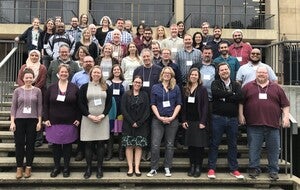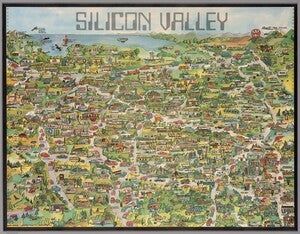In the last week of January Stanford University hosted Geo4LibCamp, an unconference style meeting bringing together people from the library community interested in publishing, describing, and sharing geospatial data. Sessions were a mix of invited talks and breakout discussions on participant-chosen topics including community best-practices, new-feature showcases, project status updates, metadata and accessioning workflow concerns, and lessons learned.

The institutions represented are all at varying stages of building out their geospatial data infrastructures and have a wide variety of goals. Some already have an established searchable dataset while others are just starting to think about exposing content. Some focus on exposing locally-produced and unique data while others actively collect public datasets to store redundantly. Some choose to host private data behind institution-specific authentication while others focus on exposing only open content. Some don't host any data at all and choose only to aggregate metadata records and link to datasets published elsewhere.
While the meeting was not focused on any particular tool, many of the participants are using GeoBlacklight as a search and discovery interface so many of the talks centered around its use and development. A new addition to the software that was showcased is the ability to display index maps. Index maps serve as a single point of access to a collection geographic resources related to a particular region, for example, digitized maps or aerial photos. See an example from Stanford's EarthWorks catalog. This feature is implemented using a community-developed format called OpenIndexMaps based on GeoJSON.
Another initiative related to GeoBlacklight called OpenGeoMetadata focuses on sharing metadata between institutions. Contributors can expose their metadata through the GitHub organization which allows other institutions to periodically harvest and ingest the records into their own GeoBlacklight instances for wider exposure.
One particularly impressive highlight from the week was a visit to the David Rumsey Map Center. The Center houses many cartographic primary materials and showcases them with a variety of technologies. Rumsey himself presented on the history of mapping San Francisco using digitized maps displayed on the Center's large high-resolution presentation wall. Between talks we were allowed to use the Center's Oculus Rift stations to experience Virtual Reality versions of Google Earth and digitized historical maps.

Zoomable Interface for Silicon Valley Image
(Image credit: David Rumsey Map Collection)
Many thanks to Darren Hardy, Jack Reed, Stace Maples, the rest of the Stanford staff for hosting and just as many thanks to the entire community for the helpful and informative meeting. The discussions were invigorating and provide a good basis to begin thinking about our own geospatial discovery infrastructure here at ASU.
- by Matthew Cordial, Digital Library Software Engineer, ASU Library